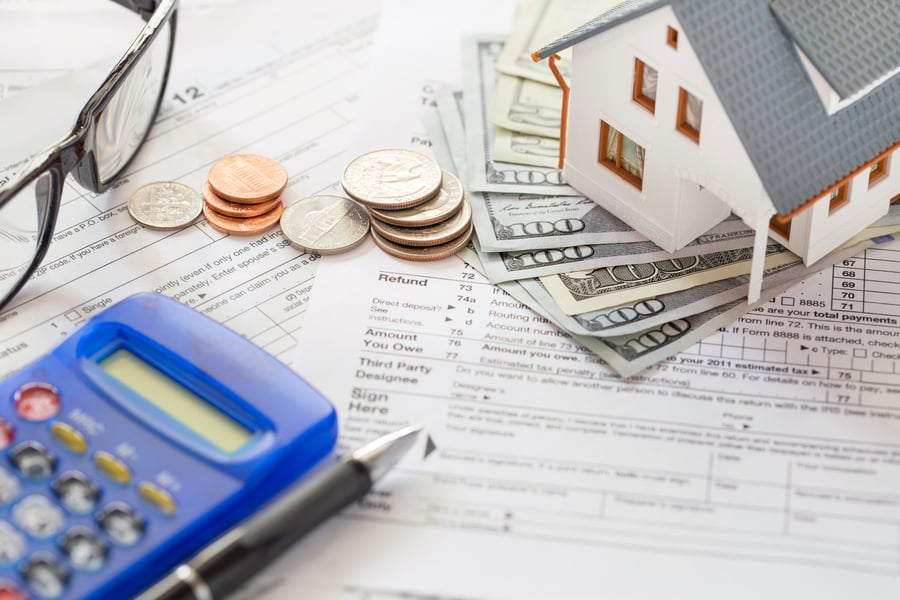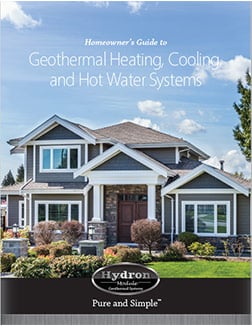What did the Inflation Reduction Act Accomplish for Geothermal?
In 2022, the Inflation Reduction Act (IRA) 2022 was passed. One of the effects of this bill includes the geothermal federal tax credit increasing from 26% to 30% until 2032. The tax credit was also extended into 2034, making it a reliable resource for many years. Below is a summary of the tax credit rates for residential and commercial geothermal installations.

The bill extends the credit for residential installations at the following rates:
- 2022-2032 - 30%
- 2033 - 26%
- 2034 - 22%
The commercial tax credit is extended under a two-tier structure:
- A “base rate” of 6% (or 1/5 of the bonus rate)
- A “bonus rate” of 30%
- An additional “Domestic Content Bonus” of 10% for US-made products, which Enertech products qualify for (specific labor requirements may need to be met to qualify for the domestic content bonus)
FAQs and Requirements to Qualify for the Geothermal Tax Credit
-
The geothermal heat pump must meet Energy Star requirements upon finalization of the installation in order to qualify for the federal tax credit. Most Enertech-manufactured geothermal heat pumps are Energy Star certified and far exceed Energy Star Requirements due to Enertech being an Energy Star certified manufacturer. Of course, please confirm with your installer that your heat pump is eligible for the tax credit prior to installation.
-
You must own the home where the heat pump is being installed, use the home as your “principal residence,” and the home must be in the United States to qualify. Circumstances such as military service, vacation, education, business, illness, etc., will not change your principal residence. You can utilize the tax credit for more than one location, such as your primary and secondary home. The tax credit can be utilized multiple times if you install geothermal in more than one home or building. Secondary homes, vacation homes, condos, mobile homes, etc., can all qualify for the federal tax credit.
-
You can claim the tax credit for both existing homes/retrofit and new construction.
-
The geothermal system will not qualify for the tax credit if used solely for heating hot tubs or pools.
-
You can apply for the tax credit after having your system installed and properly running. The IRS refers to this as “placed in service.”
-
Products used solely for rental properties will not qualify for the tax credit. The tax credit is only available for your principal residence(s). If your principal residence is also rented out, you could receive a percentage of the geothermal tax credit. More details on this are included in Section 25C€ (2) Joint ownership of energy items on the IRS form. Please see assistance from a tax professional if your principal residence has geothermal and is a rental.
-
The tax credit is not refundable. The credit can be carried forward for a maximum of ten years.
-
The geothermal tax credit covers expenses associated with ground source heat pumps, which may include onsite preparation, equipment, assembly, and necessary piping or wiring used when connecting the system to the home. When determining the total cost of the geothermal system, you can include all covered products, labor if you did not do the labor yourself, and sales tax. Additional add-on components may not be eligible for the federal tax credit.
Geothermal Federal Tax Credit: How to Apply
How can you take advantage of the savings the geothermal federal tax credit offers? Once your unit and system have been installed, you will fill out IRS Form 5695. The form from the IRS website is linked below. Once the form is filled out, submit it with your tax returns to the IRS. Using a tax professional is recommended. Download our guide to residential tax incentives for more information. Additionally, after you’ve filed, if you would like a Manufacture’s Certification Statement to keep for your records documenting the tax credit with the tax year you filed, that is available for you to download anytime as well.
- Form 5695
- Form 5695 Instructions
- www.irs.gov/contact
- IRS Phone Number 1-800-829-1040
Along with the federal tax credit, there could also be state and local incentives that you qualify for, which would reduce the cost of geothermal even more. Resources such as HVAC installers, tax professionals, and www.dsireusa.org, a database of state incentives, could all be helpful resources to you. Don't hesitate to contact us if you have any questions or want to speak with someone for more information.



